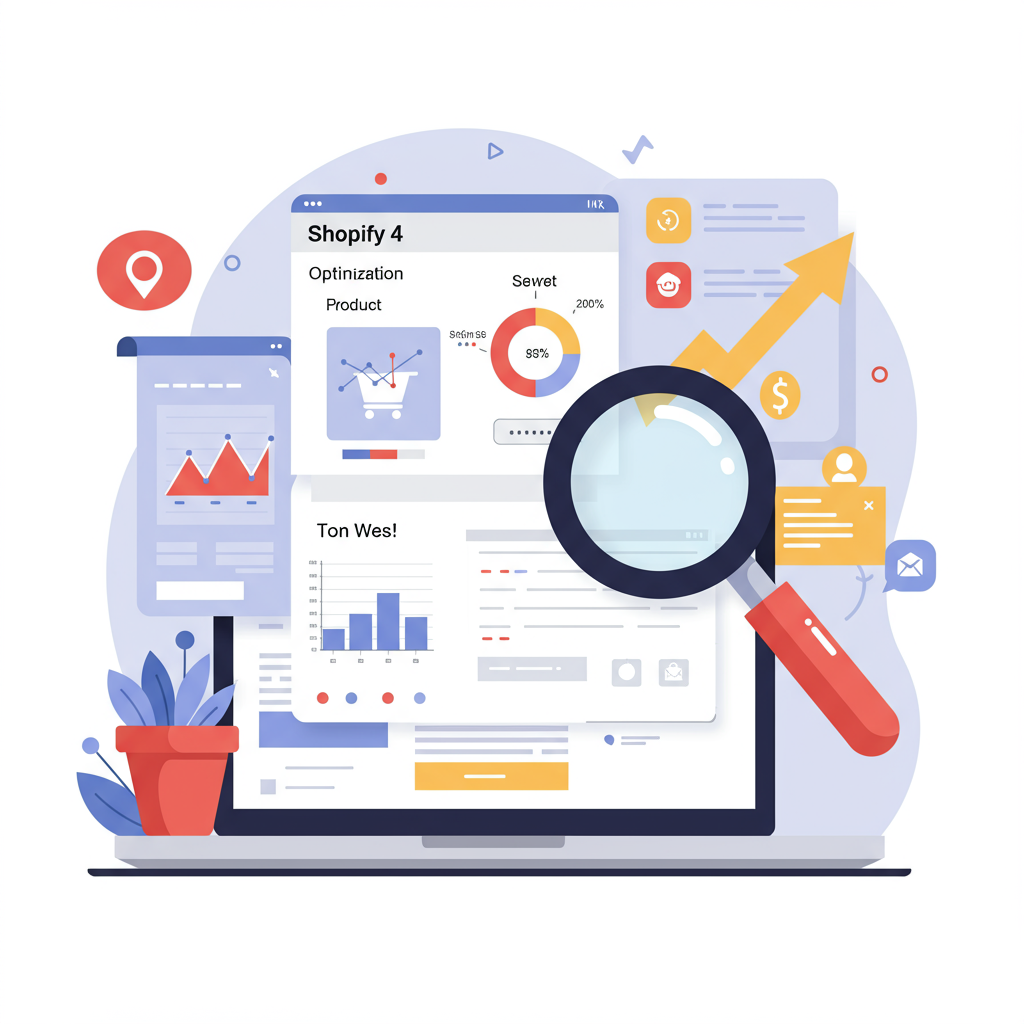Unlock Organic Traffic and Boost Sales with Strategic Optimization
As a Shopify merchant, you’re constantly looking for ways to grow your business and reach more customers. One of the most powerful, yet often underutilized, strategies at your disposal is Search Engine Optimization, or SEO.
Specifically, optimizing your product pages for search engines can dramatically increase your visibility, driving qualified organic traffic directly to the products people are already searching for.
Think about it: when someone types a specific product into Google, do your products appear on the first page? If not, you’re missing out on a huge segment of potential customers who are actively looking to buy.
While Shopify provides a solid foundation for SEO, truly excelling in the competitive e-commerce landscape often requires going beyond its built-in features. This is where specialized SEO optimization tools come into play.
These tools can help you identify the right keywords, optimize your product content, improve your site’s technical performance, and track your progress, ultimately leading to higher rankings and more sales.
Before diving into tools, let’s quickly recap the core elements of product SEO. It involves making your product pages appealing to both search engines and human visitors.
This includes crafting compelling product titles and descriptions, using relevant keywords, optimizing images, and ensuring your URLs are clean and descriptive.
Shopify, by default, offers basic SEO fields for each product. You can edit the product title, description, URL handle, and meta title/description directly within the product editor.
You can also add alt text to your product images, which is crucial for accessibility and provides search engines with context about your visuals.
However, these native features, while helpful, don’t provide the in-depth analysis, competitive insights, or advanced automation that many merchants need to truly dominate their niche.
For instance, Shopify doesn’t tell you which keywords have the highest search volume or lowest competition for your specific products. It doesn’t automatically suggest schema markup or identify broken links across your store.
This is precisely why investing in dedicated Shopify product SEO optimization tools becomes not just an advantage, but often a necessity for serious growth.
These tools fall into several categories, each addressing a different aspect of your SEO strategy: keyword research, on-page optimization, technical SEO, and performance monitoring.
Let’s start with **Keyword Research Tools**. Finding the right keywords is the bedrock of any successful SEO strategy. You need to know what your potential customers are typing into search engines.
Tools in this category help you discover high-volume, low-competition keywords relevant to your products. They can also reveal long-tail keywords, which are more specific phrases that often indicate higher purchase intent.
For example, instead of just “running shoes,” a long-tail keyword might be “men’s waterproof trail running shoes size 10.” Targeting these can bring highly qualified traffic.
Next, we have **On-Page Optimization Tools**. Once you have your keywords, these tools help you strategically place them within your product page content.
They can analyze your product titles, descriptions, and meta descriptions, suggesting improvements for keyword density, readability, and overall SEO effectiveness.
Some advanced tools can even help you implement **Schema Markup** (structured data) for your products. This tells search engines specific details like price, availability, and reviews, often leading to rich snippets in search results.
Optimizing your product images is another critical on-page factor. Tools can help you compress image file sizes without sacrificing quality, ensuring faster page load times, which is a significant ranking factor.
They also assist in generating descriptive alt text and file names for your images, making them more discoverable in image searches and improving accessibility.
Moving on to **Technical SEO Tools**. These focus on the underlying health and performance of your Shopify store, which indirectly but powerfully impacts your product rankings.
Page speed is paramount. If your product pages load slowly, visitors will bounce, and search engines will penalize you. Tools can identify bottlenecks and suggest optimizations for faster loading times.
Other technical aspects include identifying and fixing broken links, ensuring your sitemap is correctly submitted to search engines, and checking for crawl errors that prevent search engines from indexing your products.
Finally, **Analytics and Monitoring Tools** are essential for tracking your progress and making data-driven decisions. You need to know if your SEO efforts are paying off.
These tools provide insights into your keyword rankings, organic traffic, conversion rates from organic search, and identify any new SEO opportunities or issues that arise.
They can help you understand which products are performing well in search and which need further optimization, allowing you to refine your strategy over time.
When choosing the right SEO tools for your Shopify store, consider several factors. What’s your budget? Do you need an all-in-one solution or specialized tools for specific tasks?
Look for tools that are user-friendly, offer good customer support, and integrate seamlessly with Shopify. Many are available directly through the Shopify App Store.
Remember, SEO is not a one-time task; it’s an ongoing process. Regularly review your product performance, update your keywords, and refine your content based on new trends and search engine algorithm changes.
By leveraging the right Shopify product SEO optimization tools, you can transform your product pages into powerful magnets for organic traffic, leading to sustainable growth and increased sales for your business.
What are your thoughts on this article? Do you have any specific SEO challenges you’re facing with your Shopify products?
I hope this comprehensive guide empowers you to take control of your product SEO and achieve greater success in the competitive e-commerce world.






